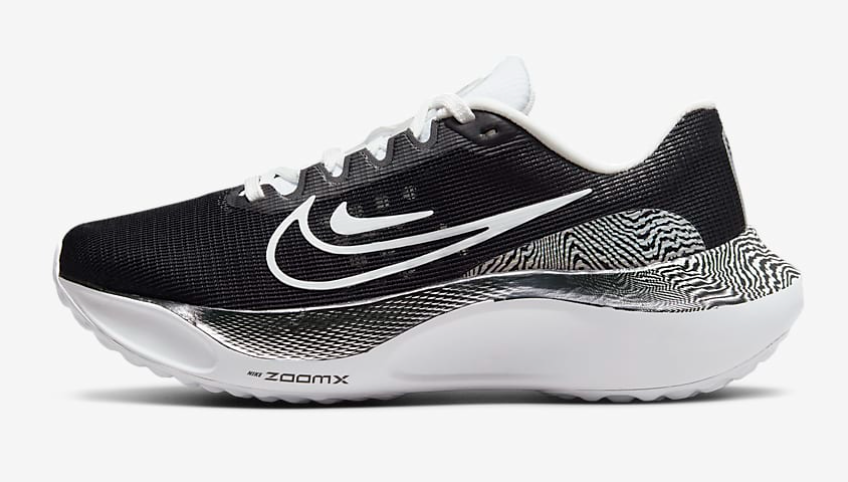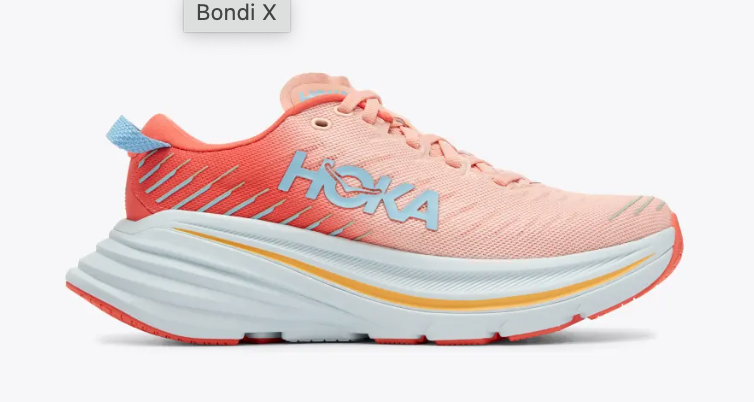
[ad_1]
These next-gen sneakers have become the go-to racing shoes for elites and serious amateurs alike. And it’s easy to see why: Carbon shoes make running fast feel easier; like you have mini-trampolines on your feet propelling you forward. A recent study found that, among runners who own carbon shoes, 91 percent reported that the shoes give them more confidence, and 100 percent of those who’d raced in them said the shoes helped their performance.
This effortlessly-fast feeling can be addictive—and can supposedly boost your running efficiency by up to four percent. (Hello, new PR!) And with the recent availability of training-specific carbon shoes on the market, it’s tempting to go all-carbon, all the time. Why wouldn’t you want to feel effortlessly fast on all your runs?
One potential reason: Shoes with carbon plates tend to be more expensive than other running shoes, typically costing between $200 and $300. (Though the training-specific versions are slightly more affordable, usually in the $150 to $250 range.)
They also don’t last as long. Whereas shoes without plates should carry you between 300 and 500 miles, carbon-plated shoes may not even have half that lifespan.
And what makes carbon shoes so perfect for race day can make some runners feel like they’re “cheating” during training runs, like they aren’t working as hard as they would wearing non-plated shoes. (And isn’t working hard the whole point of training?) Plus, since the carbon plate is a relatively new technology in running shoes, there’s still lots we don’t know about what the shoes mean for our bodies long-term.
So can carbon shoes work as an everyday trainer? We broke down the pros and cons, plus what kinds of runners they’re made for and the best models for training runs.
How carbon-plated shoes work
Most carbon-plated shoes—what many call “super shoes”—combine a light, rigid, propulsive carbon plate with a thick stack of foam cushion. The plate rebounds as you run, acting as a shock absorber and helping you push off more aggressively with less effort, and the foam stack makes the ride feel cushy and bouncy.
The rigidity and propulsiveness of the plate means that most runners’ mechanics will change slightly when wearing these shoes. Your center of gravity will be further forward than usual, and your feet and ankles won’t have to work as hard. Some runners report that super shoes are easier on the legs, helping them to experience less delayed onset muscle soreness after tough speedwork sessions or races. But others who may not be used to the shoes may initially get more sore, since they are activating slightly different muscles as they run.
This also means that wearing super shoes too often could weaken your feet and ankles over time, as well as your proprioception, says Mark Mendeszoon, DPM, a podiatrist who owns two running shoe stores in Ohio and Pennsylvania.
“They’re going to lose memory, things are going to atrophy,” he says. “So even though you may be running faster, you may be negating the natural motion of the foot and ankle biomechanics.” This could make your running suffer when you aren’t wearing super shoes.
Other potential risks include forefoot injuries, like blisters, calluses, traumatized toenails, and metatarsalgia (inflammation of the bottom of the ball of the foot), says Dr. Mendeszoon, since you’ll be spending more time than usual on the front of your foot (unless you’re a professional runner and perfect forefoot-striker!), and since super shoes often have relatively narrow toe boxes. Some experts believe that the shoes’ extreme energy return could overtax the tendons and ligaments in the midfoot, or lead to plantar fasciitis or bone stress injuries. And Lee Firestone, DPM, a podiatrist and certified running coach, says that the high stack in most carbon shoes could lead to instability, leaving you at a greater risk of ankle sprains.
Who carbon-plated shoes are best for
Deployed with strategy and intention, carbon-plated shoes can be a game-changing addition to an experienced runner’s shoe rotation. Yes, the word “experienced” is key. Dr. Firestone emphasizes that runners should already have strong running form—including a fast cadence, a slight forward lean, and a strong knee drive to avoid heel striking—in order to wear the shoes, as well as strong feet, ankles, and glutes.
That doesn’t mean you need to have perfect running form to wear carbon shoes, or that you can never heel strike at all. In fact, it’s totally normal for your form to relax slightly during easy or recovery runs, says Nike running coach Jes Woods, which likely means landing further back on your foot. “When wearing a carbon-plated shoe, that relaxed form is going to feel awkward and you’re no longer taking advantage of the shoe and what it’s designed to do,” she says.
Bottom line: Save carbon shoes for when you’ll be running fast enough for them to work their magic. And if you’re still a running newbie, get comfortable logging miles in traditional running sneaks before incorporating super shoes into your rotation.
But also know that some runners could be uniquely served by carbon plates, says Dr. Mendeszoon, such as those with bunion issues or arthritic toe joints, since super shoes don’t require the toes to push off as much as a regular shoe.
How often to wear super shoes
If you’re set on incorporating a carbon shoe into your training, first thing’s first: Get a fitting from a professional just like you would any other running shoe, says Dr. Mendeszoon. There’s lots of variation even amongst shoes with carbon plates, and someone at your local running store can help you find the best pair for your feet, stride, and running goals.
You’ll want to build miles slowly and gradually in carbon shoes to get used to the propulsive feeling and the different pressure points on your feet, says Dr. Mendeszoon. “It takes a little while because the shoes aren’t going to have the same amount of forgiveness,” he says. Start with shorter efforts, and work towards wearing them occasionally for speed-focused runs like interval work, hill repeats, and tempo runs. That way, you’ll wear them enough to be used to the plates when race day comes around, but not so often that you’re overly reliant on them.
There’s also the psychological component of training in carbon shoes: For one, they could trick you into running faster than you need to be (another reason to avoid wearing them on easy runs). Dr. Mendeszoon points out that they could also tempt runners into thinking they can run fast on race day without doing the proper training—a recipe for a disappointing race or, at worst, an injury.
The best carbon-plated shoes for training
If you’re planning to wear super shoes on race day but don’t want to wear them out beforehand, you may want to opt for an in-between to get used to running in a carbon plate. These training-oriented options are typically more durable and more comfortable than racing shoes. And often, brands make their training carbon shoes with similar features to the racing versions for an easy transition come race day.

Nike Zoomfly 5 — $160.00
A more durable sister shoe to Nike’s Vaporfly and Alphafly, the Zoomflys feel more responsive and more stable than those lighter, faster shoes, but still with enough energy return to give your speedwork a boost. Woods especially recommends them for tempo runs, and long runs where you’re practicing some race pace, since the shoes are sturdy enough to get you through high mileage but propulsive enough to make those long stretches at an uncomfortable pace feel less like a slog.

New Balance FuelCell SuperComp Trainer — $180.00
For a super-cushioned option, there’s New Balance’s SuperComp Trainer, which boasts a whopping stack height of 47mm at the heel and 39mm at the forefoot (this means they are technically not race-legal). Some runners may find them overly bulky, but others compare them to running on bouncy pillows, with the added stability of denser foam and a wider midsole than a typical racing shoe. Chris Morfesi, New Balance’s senior product manager, recommends them for long runs and tempo runs, but suggests opting for a lighter shoe for shorter, faster efforts.

Hoka Bondi X — $215.00
The carbon-plated version of Hoka’s much-beloved Bondi, the X version maintains the same plush, cushioned feeling, with added propulsiveness from the plate and extended rocker bottom. The design is ideal for distance training efforts, according to HOKA’s director of performance product, Rebekah Broe.
Still, you shouldn’t completely save your race day super shoes for the big event: Just like any racing shoes, make sure they’ll work for you by wearing them on a few training runs pre-race. For a marathon, Dr. Firestone recommends wearing them about three times: A short run to start, a workout, and a long run. He believes that just like you wouldn’t carb-load before all of your long runs, wearing carbon shoes minimally before race day will help you feel extra-fast when it counts.
“Don’t think of it as cheating,” he says, “Think of it as being able to maximize the energy that your body produces to make you a more efficient runner on race day.”
Our editors independently select these products. Making a purchase through our links may earn Well+Good a commission.
[ad_2]
Source link